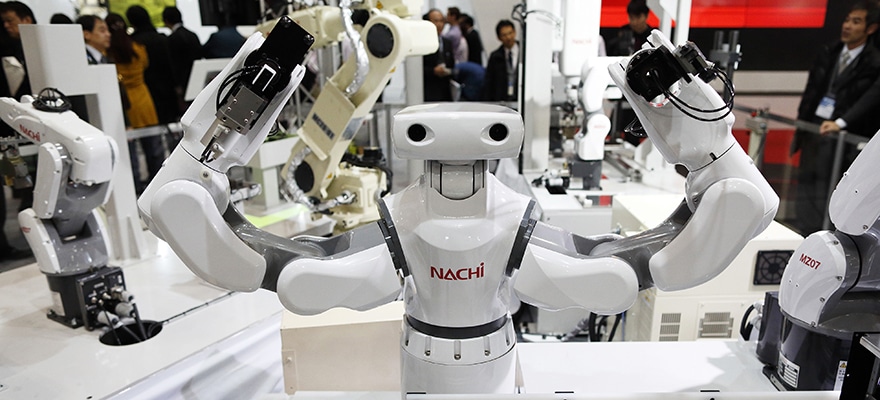When you think of brands, Dr Hannibal Lecter might not immediately spring to mind. The suave, charismatic psychiatrist and cannibalistic serial killer of Silence of the Lambs, Hannibal has all the makings of a brand guru. The Hannibal Lecter franchise is worth a fortune. According to The-Numbers.com worldwide box office returns for the five Hannibal Lecter movies comes to a total of £660 million. The Lecter novels have sold millions of copies. The novel ‘Hannibal’ spent 15 weeks on the New York Times hardback fiction best-seller list and 30 weeks on the paperback list. Silence of the Lambs won five Academy Awards. Hannibal Lecter was voted the American Film Institute’s number one villain of all time. The TV series Hannibal has won 13 awards and been nominated another 27 times over its three seasons. The Hannibal juggernaut just keeps rolling.
Simplicity - Read Marcus Aurelius
In the novel and subsequent movie of Silence of the Lambs, Hannibal Lecter offers FBI trainee Clarice Starling this sage piece of advice in her fevered search for protagonist Buffalo Bill. Hannibal suggests that Clarice reads Marcus Aurelius: “Of each particular thing ask what is it in itself? What is its nature?” Of course, Hannibal is right. Every brand and organization should ask these fundamental questions. Why are you in business? What customers do you seek? Where will you find them? How will you engage them? Your brand is that indelible impression you leave on your customers with every interaction. It’s like trace evidence left at the scene of a violent crime. Any discrepancy between your brand promise and its fulfillment and you’ve got trouble. You must make certain that everyone across your extended organization knows and understands what your brand promise means and how it should be delivered. It’s Marketing ’s job to convey your brand promise to everyone across your organization, and help engender understanding. Marketing must also provide the tools to equip your people as they strive to fulfill your brand’s promise. Finally, marketing must always be on the lookout for obstacles and roadblocks that might divert your brand from its true path.
Articulation - Free-Range Rude
Dr Hannibal Lecter is the epitome of urbane sophistication. Brilliant, cultured, witty and predatory, he is a man who loves the finer things in life and abhors vulgarity. In fact, Dr Lecter once told Barney, an attendant at the Baltimore State Hospital for the Criminally Insane, that whenever it was feasible, he preferred to eat the rude. Free-range rude, he liked to call them. Hannibal is a man intent on projecting a very specific, carefully constructed image of himself onto the world. Similarly, great brands know how to communicate effectively. They understand the importance of clarity and consistency in what they say and how they present themselves. You have asked the fundamental questions. You know how well your brand is working. You know what you are best at. You are confident that you can deliver your brand promises. You have established your position in the marketplace. You understand what makes your brand unique. You know what type of lasting impression you want to leave in the hearts and minds of your customers. Now, having distilled your brand to a set of core values that run through everything you do, it’s time to find your voice.
Finding Your Brand Voice
There are many different approaches and techniques to tease out your brand voice. You can do something simple like write down a handful of keywords that best express your brand’s core values. Make sure it’s a fairly short list, maybe three to five words. Next, agree on some definitions of these keywords. Set a few rules about how they can and cannot be used. As part of this process you will want to listen to what your competitors are saying, and how they are saying it. Naturally you will want to differentiate yourself from the herd. Most critically of all, your brand voice must be authentic and gel with your customers. Humans are very social animals. We like to talk about a wide variety of topics in general conversation, right? Wrong. On average, people spend about 60% of conversations talking about themselves. When we use social media we spend 80% of that time talking about ourselves. Unsurprisingly, many brands have tended to do the same. However, few of us are really listening. If we take a look at the top 50 most followed profiles on Instagram, for example, only two are brands. And the first one of those is at number 20. Why? Although brands are like people, they are not people. Brand communications must be framed in such a way as to always place the customer at the centre of the conversation.
Influence and Multiple Miggs
Hannibal Lecter can kill with the power of suggestion. In Silence of the Lambs he induces fellow patient Multiple Miggs to kill himself after a display of discourtesy towards Agent Starling. Hannibal really knows what makes people tick. In marketing terms we would say he has great insight. He understands peoples’ values, passions, strengths and weaknesses. He flatters, charms and skilfully manipulates his victims to their sticky ends. Brands, like people, have distinct personalities. After all, a brand is far more than just a company logo. It’s what an organization stands for in the minds of its customers. And every encounter and interaction influences that customer view of the brand. It can make the relationship deeper and stronger, creating trust and loyalty, or it can do the opposite. Clearly brands whose personalities and values most closely reflect those of prospective customers stand the best chance of success. Over time this customer brand affinity becomes somewhat hardwired into brand preference. It’s the reason we pick one soap powder over another without a conscious thought as we wander the supermarket aisles. It seems that deep-seated brand preferences start early in childhood and can last a lifetime. In a study called ‘Children’s Brand Symbolism Understanding’, researchers found that if you are repeatedly exposed to a brand as a child, you will be more likely to try that brand as an adult. What’s more, you will already have a bias or brand preference established, making it much harder for competing brands to win you over. This creates an intriguing, slightly sinister opportunity for forward-thinking marketers to cultivate brand preference in generations of prospective customers.
Adaptability - Highly Organized Killers
In his book ‘Whoever Fights Monsters: My Twenty Years Tracking Serial Killers for the FBI’, Robert Ressler explains: “Adaptability and mobility are signs of the organized killer. Moreover, organized killers learn as they go from crime to crime; they get better at what they do.” Hannibal Lecter is certainly the most organized and meticulous of crime fiction’s serial killers. It’s Hannibal’s unique combination of foresight, brilliance, adaptability and opportunism that enables him to escape custody and remain one step ahead of the law. Great brands know how to change, adapt, embrace or predict the future. They are the leaders of innovation. Like Hannibal they understand it’s far better to be disruptive than complacent. In the business world complacency is the real killer. The corporate graveyard is full of the bloated bodies of businesses who were too busy serving existing profitable customers to notice the axe-wielding new entrant sneak-up behind them.
The Killing of Kodak
Founded in 1880, Kodak was one of the world’s truly great brands. Inventors of the revolutionary point-and-shoot Brownie series of cameras, Kodak introduced the concept of low-cost, snapshot photography. By the early 1960s Kodak sales hit the $1 billion threshold. In 1975 a Kodak employee named Steve Sasson developed the first digital camera. By 1976 Kodak had 90% of the camera film market. In 1986 Kodak introduced the first megapixel digital camera. In 2012 Kodak filed for Bankruptcy . So, what went wrong? Kodak suffered a complete collapse of the camera film market in under a decade. Kodak was a slow, monolithic bureaucracy. It had a reputation for being a risk averse and deeply conservative organization. Kodak regarded itself as a chemical company, not a photographic or imaging business. Overall, Kodak was extremely resistant to change. It was restructured seven times between 1983 and 1993. The CEO changed so often no one knew who was running the show. Kodak also got distracted by litigation, costly battles with competitors and diversifying into areas such as copiers and clinical diagnostics. The company failed to understand how the Internet and rise of social media would change photography forever. By the time Kodak launched its digital transformation in 2004 its fate was already sealed. Once a household name, today Kodak is a pale imitation of itself. In the glory days it employed 145,000 people worldwide; now that figure is just 8,000. Much of its $2 billion revenue comes from legacy businesses. That’s a long way from sales revenue of $20 billion back in 1990. While more insightful competitors started small, innovative and entrepreneurial digital imaging subsidiaries, Kodak was busy looking the other way when the axe fell. Kodak is a cautionary tale of how complacency and lethargy can kill even the biggest brand name. As Hannibal Lecter so eloquently points out: “The tragedy is not to die, but to be wasted.”
‘H’ has the Final Word
Hannibal as brand guru has helped us see the importance of simplicity. Great brands are absolutely clear about their purpose and core values. Brands must communicate with a distinctive, authentic voice. However, the primary topic of conversation must always be the customer, not themselves. Successful brands exert enormous influence over their customers. It’s a relationship that once established and properly cultivated can last a lifetime. Lastly, we have seen how hubris can undo the mightiest organization. Like all top predators, smart brands know that you have to keep moving forward or die. You must always be alert to danger and ready to exploit the smallest opportunity.

















